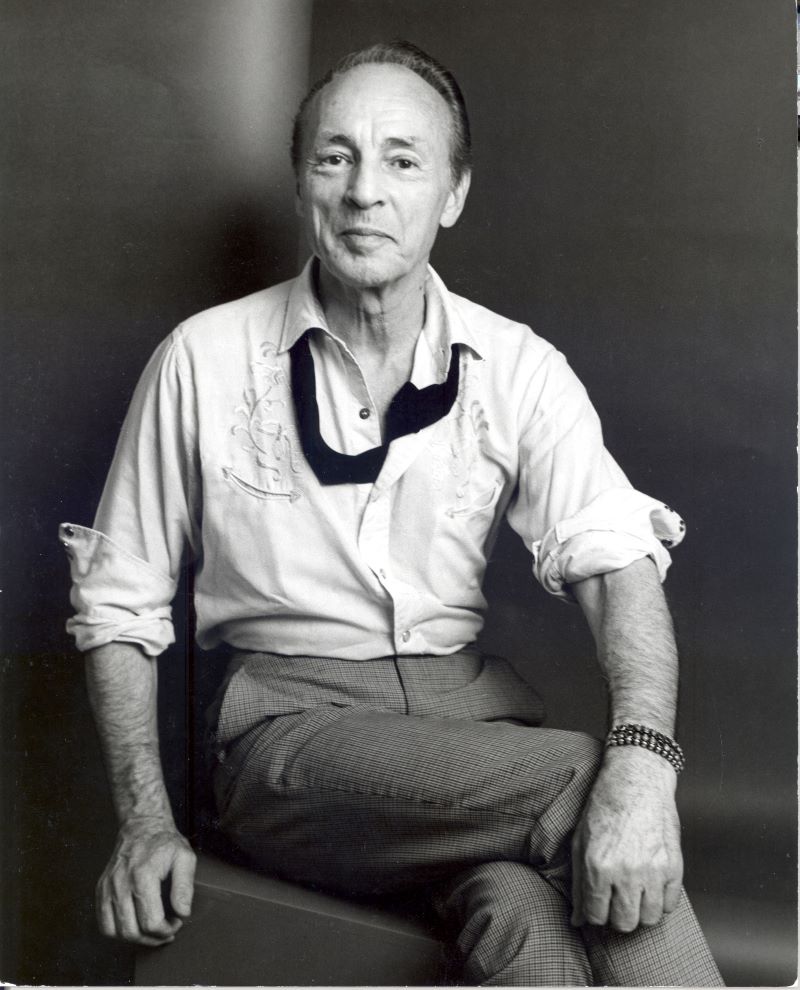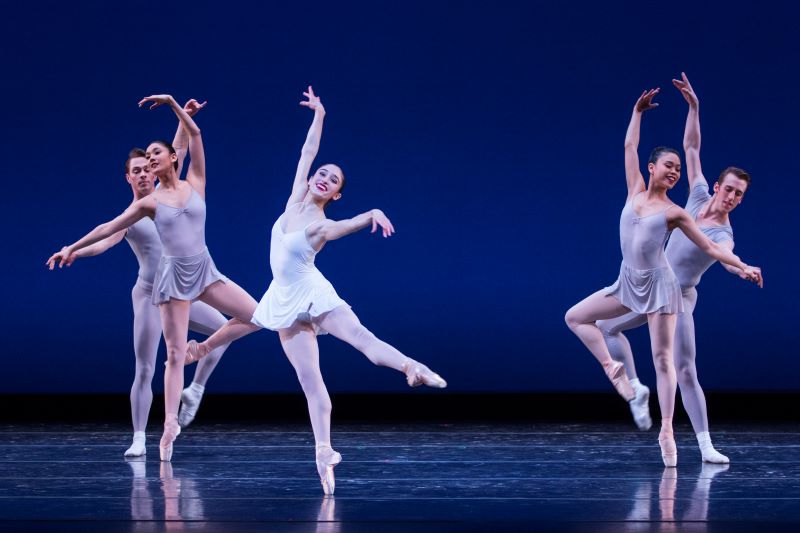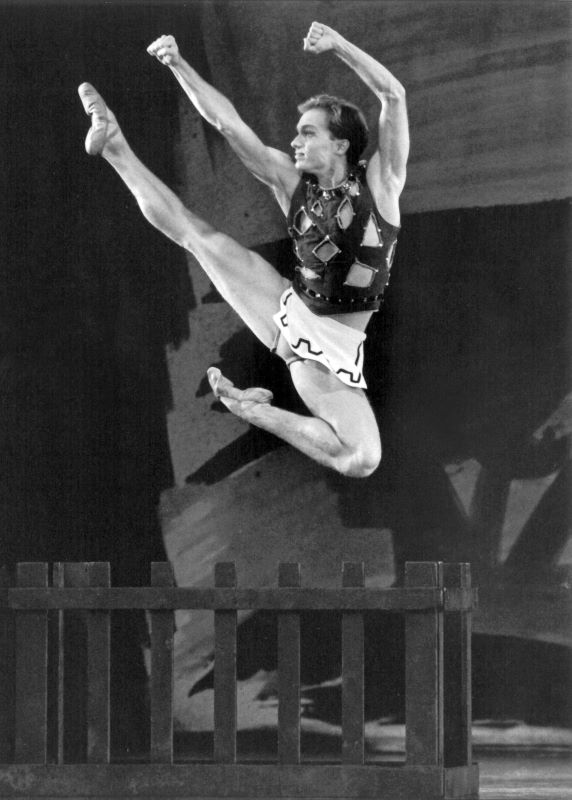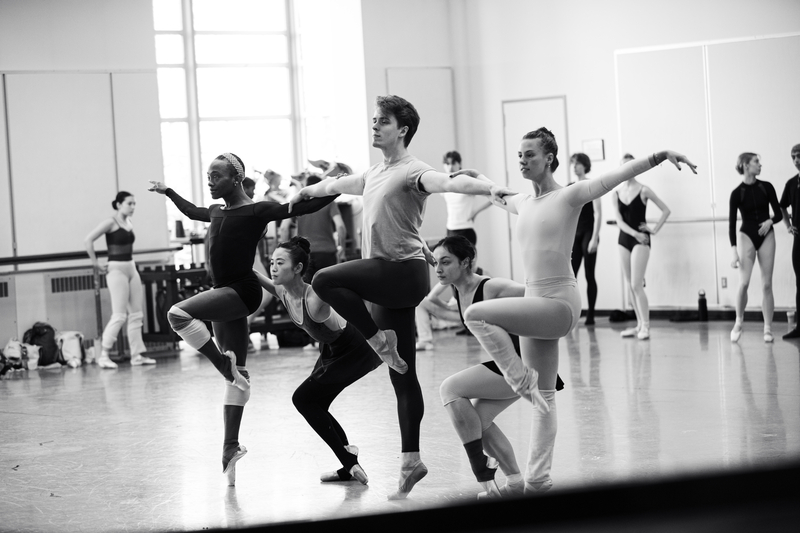Artistic Director’s Notebook: Square Dance, Prodigal Son, Stravinsky Violin Concerto
Dear Friends,
George Balanchine spent his life making dances, first in his native Georgia, then Russia, Paris, Monte Carlo, Denmark, and finally New York. Balanchine is often regarded as the great neo-classic innovator with works like The Four Temperaments, Agon, and Stravinsky Violin Concerto. In ballets like Coppélia, A Midsummer Night’s Dream, and Prodigal Son, he showed us he was a storyteller too. He was also an entertainer. Most of his creations were ballets, but among more than 400 works were films, Broadway shows, and even a dance for elephants. He created Circus Polka for 50 elephants as part of Ringling Brothers and Barnum & Bailey Circus.

To capture Balanchine’s contribution to ballet in America in a few paragraphs is impossible, but I’ll attempt to scratch the surface. Balanchine, often in partnership with benefactor and arts impresario Lincoln Kirstein, founded the School of American Ballet and New York City Ballet. These institutions served as his dance laboratories. In these humble studios, with the help of dancers, musicians, and fellow artists, revelatory discoveries in ballet technique and dance-making came to life. Dancers hold Balanchine’s ballets in a place of reverence. That is especially true of PNB dancers, who enjoy a wealth of Balanchine repertoire and possess an innate technique and musicality acquired at schools like ours.

The program you are about to see represents a span of 47 years. Prodigal Son was created when Balanchine was only 25; Stravinsky Violin Concerto when he was 68. Square Dance premiered in 1957, with a solo added in 1976 when the choreographer was 72. This version of Square Dance doesn’t resemble the original. Balanchine was notorious for stripping away costumes, sets, excess music – reducing his dances to an essence. Would you believe the ballet was once performed with a caller seated on a hay bale, sporting a Stetson and bolo tie? Despite the stark neo-classicism, dancers move in patterns derived from traditional western square dances. Look for “Allemande Left.” See how dancers strut towards one another, offering a nod and a smile. The added solo was created on Bart Cook, who taught it to me. Passing the torch from one generation to the next honors those who previously danced these roles and those who perform them today and tomorrow.

Balanchine choreographed Prodigal Son in 1929. It was the last creation commissioned by impresario Serge Diaghilev for his Ballets Russe. Prodigal Son is the second oldest surviving work by Balanchine. Another torch is passed with Prodigal Son from Serge Lifar to Edward Villella, Rudolf Nureyev, and Mikail Baryshnikov. Many will remember PNB casts, including Jonathan Porretta, James Yoichi Moore, and Lucien Postlewaite. Jerome Robbins was the first to perform the role of the Son with New York City Ballet. He taught it to me when I was 20. I still quote him when I coach dancers today.

Stravinsky Violin Concerto was a standout of New York City Ballet’s 1972 Stravinsky Festival. The relationship between composer and choreographer was legendary, with Balanchine often articulating his admiration for Stravinsky. A young dancer named Colleen Neary was part of the original corps de ballet. Colleen enjoyed a remarkable career working with Balanchine as a member of New York City Ballet and later as a principal dancer with Royal Danish Ballet and Pacific Northwest Ballet. She was also a rehearsal director for the Royal Danish Ballet and co-directed Los Angeles Ballet with her husband, Thordal Christensen. We are pleased to have her with us as the stager for Stravinsky Violin Concerto.
Balanchine considered himself a musician first, often taking to the piano on breaks, impressing dancers and friends. His father was a violinist and a composer. He would select repertoire knowing he had a talented and hungry orchestra as part of his company. PNB has one too – often accurately described as one of the best ballet orchestras in the country. The beauty of any orchestra is the contribution of every player. Occasionally, one shines. That is often concertmaster Michael Jinsoo Lim. His bow darts as fast as any feet on stage. His held notes seem to extend dancer’s limbs while summoning tears. His skills are on proud display in all three pieces on the program, including a tour de force in Stravinsky Violin Concerto. He sets the barre high, like his peers in the pit, onstage, and everywhere at PNB. I think Balanchine would be proud.
Kind Regards,

Photo credits: George Balanchine. Leta Biascci and PNB Company dancers in George Balanchine’s Square Dance, photo © Lindsay Thomas. Peter Boal in George Balanchine’s Prodigal Son at New York City Ballet (featured photo), photo © Paul Kolnik. PNB Company dancer rehearsing Stravinsky Violin Concerto, photo © Lindsay Thomas.





